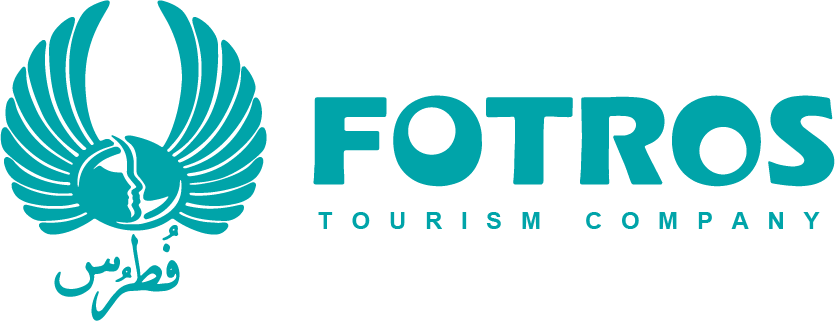
Cosmetic Surgeries
face lıft
A facelift, also known as rhytidectomy, is a surgical procedure performed to reduce the signs of aging on the face and neck. It is a cosmetic surgery that aims to create a more youthful appearance by tightening the skin and underlying muscles, as well as removing excess fat and sagging skin. Here are some key aspects of a facelift:
The primary goal of a facelift is to address various signs of facial aging, such as wrinkles, sagging skin, and jowls (drooping skin along the jawline). It can also improve the appearance of the neck.




Face lift Procedure:
Facelift surgery typically involves making incisions in inconspicuous locations, often along the hairline and around the ears. These incisions allow the surgeon to access the underlying tissues. They then lift and reposition the muscles and tissues, remove excess fat, and trim away loose skin. The result is a smoother, more youthful facial and neck contour and is performed under anesthesia, which can be local with sedation or general anesthesia, depending on the extent of the surgery and the patient's preferences.
After the surgery, patients may experience some swelling, bruising, and discomfort. These side effects typically subside over a few weeks. Patients are advised to follow post-operative instructions carefully to promote proper healing. The results of a facelift are not permanent, as the natural aging process continues. However, it can significantly turn back the clock and provide a more youthful appearance that can last for several years.
Good candidates for facelift surgery
Good candidates for facelift surgery are typically in good health, have realistic expectations, and wish to address the visible signs of facial aging.
It's important to consult with a board-certified plastic surgeon to discuss your specific concerns and goals, and whether a facelift is the right option for you. The surgeon can evaluate your individual needs and recommend the most appropriate approach to help you achieve your desired results.
There are several different types of facelift procedures, each designed to address specific concerns and achieve different outcomes. The choice of facelift technique depends on the patient's individual needs and goals. Some people choose to have additional procedures or non-surgical treatments to maintain their results over time.




Here are some common types of facelift procedures:
Traditional Facelift (Full Facelift): This is the most comprehensive facelift procedure and addresses the entire face, including the lower face, mid-face, and neck. It involves incisions along the hairline, around the ears, and possibly under the chin. The surgeon can reposition and tighten the underlying muscles, remove excess fat, and lift and redress the skin.
Mini Facelift: A mini facelift is a less invasive option for those with milder signs of aging. It primarily focuses on the lower face and jowls. The incisions are smaller, and the recovery time is usually shorter compared to a full facelift.
Mid-Facelift: This procedure targets the mid-face area, including the cheeks and the area around the eyes. It can be suitable for patients with sagging cheeks and nasolabial folds (smile lines).
Neck Lift: A neck lift, specifically addresses sagging or loose skin in the neck area. It may be performed in combination with a facelift or as a standalone procedure.
Thread Lift: A thread lift is a minimally invasive procedure that uses dissolvable threads with tiny barbs to lift and reposition the skin. While it provides some improvement, the results are generally less dramatic and shorter-lasting than traditional facelifts.
SMAS Facelift: Superficial Musculoaponeurotic System (SMAS) facelift is a technique that focuses on tightening and repositioning the deeper layers of tissue, which can provide longer-lasting results compared to superficial skin tightening.
Deep Plane Facelift: This technique involves lifting and repositioning the deeper facial tissues, including the muscles, to achieve a more comprehensive rejuvenation. It is often recommended for patients with more advanced signs of aging.
Liquid Facelift: A liquid facelift is a non-surgical procedure that uses dermal fillers and injectables to restore volume and reduce the appearance of wrinkles. While it doesn't involve surgery, it can provide a temporary improvement in facial appearance.
The choice of facelift type depends on the patient's age, the extent of aging, and their specific concerns. A consultation with a board-certified plastic surgeon is essential to determine the most appropriate facelift technique and to discuss the expected results, recovery, and potential risks associated with the chosen procedure.




General care after facelift
After a facelift (rhytidectomy), it's important to take proper care to ensure a smooth and safe recovery process. Here are some general care guidelines to follow after a facelift:
Your surgeon will provide you with specific post-operative instructions. Make sure to follow them carefully, as they are tailored to your unique situation. Rest is crucial during the initial days following surgery. Elevate your head while sleeping to reduce swelling and bruising. also, You may experience some pain and discomfort. Your surgeon will likely prescribe pain medication to help manage this. Follow the dosing instructions and do not take more than recommended.
Swelling and bruising are common after a facelift. Apply cold compresses as directed to help reduce swelling. This can be especially important in the first 48 hours. You'll have dressings or bandages over the incision sites. Keep them clean and dry, and follow your surgeon's instructions on when to remove them.
Your surgeon will use stitches or sutures that may need to be removed after a certain period. Follow up with your surgeon as scheduled for suture removal.
Also, Your surgeon will advise you on when you can gradually resume regular activities. You have to Follow your surgeon's advice on skincare products. Use gentle, non-irritating products and avoid sun exposure. Maintain a healthy diet, drink plenty of water, and follow your surgeon's recommendations for any dietary restrictions. Attend all scheduled follow-up appointments with your surgeon. They will monitor your progress and address any concerns. remember to Keep the incision sites clean and dry. Follow your surgeon's guidance on cleaning and changing dressings.
Smoking and alcohol can hinder the healing process. It's advisable to abstain from both during your recovery. Protect your skin from direct sun exposure for several months after surgery. Use sunscreen and wear a wide-brimmed hat if you need to be outside. It can take several weeks or even months for the final results of a facelift to become apparent. It's normal to have some emotional ups and downs during recovery. Seek support from friends and family, or consider talking to a counselor if needed.
Remember that recovery experiences can vary from person to person, and it's essential to discuss your concerns and progress with your surgeon regularly. They can provide personalized guidance and ensure your recovery is going as expected.
cost
What is the cost of a facelift in Iran? Facelift prices begin at $2,000 in Iran, covering associated expenses like anesthesia, medications, clinic fees, etc. If a neck lift is desired simultaneously, an additional cost of $200 to $500 may be incurred.




Our services include:
![]() our online services include: quotes and consultation
our online services include: quotes and consultation
![]() Planning the highest word-level medical trips and quality hospitals and medical centers according to the patient's request and budget.
Planning the highest word-level medical trips and quality hospitals and medical centers according to the patient's request and budget.
![]() Appointing treatments by the most skilled and experienced doctors.
Appointing treatments by the most skilled and experienced doctors.
![]() Airport pick-up/drop off, check-ups, accompanying translator, book hotel (for patients and their families)
Airport pick-up/drop off, check-ups, accompanying translator, book hotel (for patients and their families)
![]() Pre-hospitalization / post-hospitalization care services
Pre-hospitalization / post-hospitalization care services
All-Inclusive Medical Travel Packages
based on your budget, our team will assist you in choosing the best hotels, doctors, and medical centers. Our packages include:
 Airport Pickup Services
Airport Pickup Services Airport Dropoff services
Airport Dropoff services Hotel
Hotel Ticket
Ticket visa
visa translator
translator Transfer
Transfer SIM Card
SIM Card Sightseeing
Sightseeing


 why Iran
why Iran
Patients may choose to have abdominoplasty (commonly known as a tummy tuck) in Iran for a variety of reasons
Cost, Quality of Care, Privacy and Discretion, Combined Tourism, no Waiting Times
![]()
Fotros is an Iranian health tourism company with a professional team consisting of a support team and word-level doctors in medical and cosmetic surgeries like Neurosurgery, Rhinoplasty, Breast cosmetic surgeries, Liposuction, tummy tuck, etc.












 why Iran
why Iran